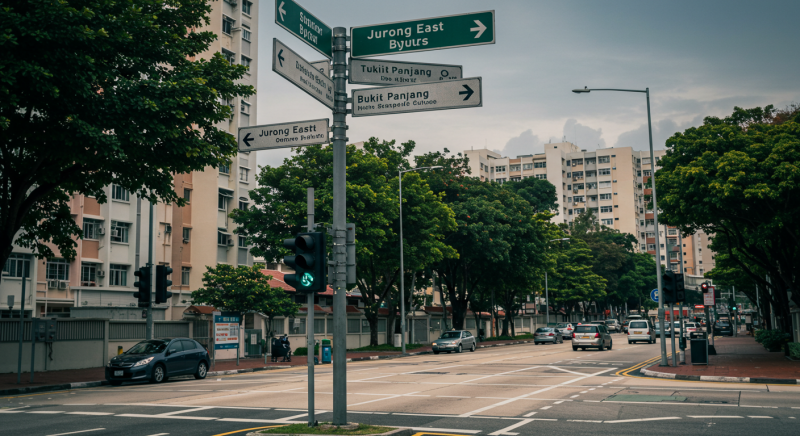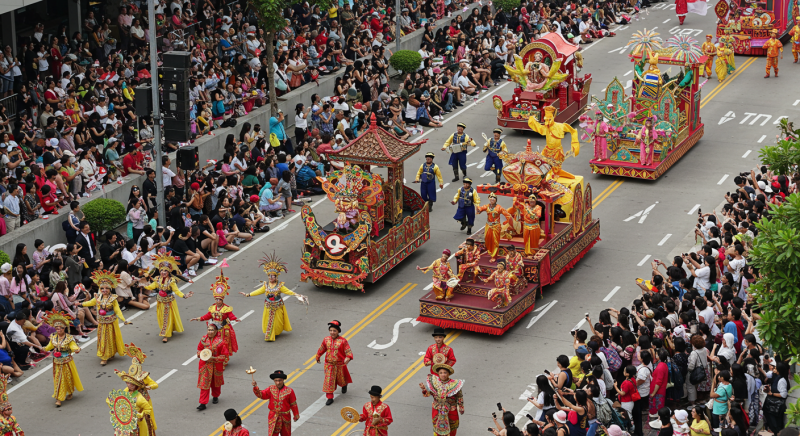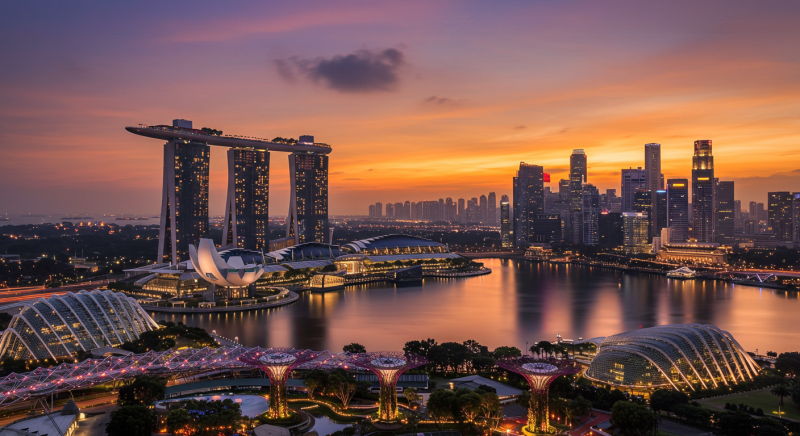Have you ever wondered what it takes to start a new life in one of the world’s most prosperous cities? Singapore, renowned for its economic stability, multicultural society, and high quality of life, attracts over 30,000 new residents annually. Whether you’re pursuing career growth, world-class education, or a safe environment for your family, this guide breaks down how to migrate to Singapore successfully.
Key Takeaways
Migrating to Singapore requires understanding visa categories, financial preparedness, and compliance with local regulations. Prioritize securing a valid work pass, research cost-of-living trends, and engage with Singapore’s cultural norms to ensure a smooth transition.

Why Migrate to Singapore?
Why should you consider Singapore as your next home? Understanding the compelling reasons to migrate to Singapore is the first step in planning your relocation journey. Known globally for its seamless blend of opportunity, innovation, and cultural harmony, Singapore consistently ranks as a top destination for professionals, families, and entrepreneurs. If you’re exploring how to migrate to Singapore, here’s why this Southeast Asian powerhouse deserves your attention:
1. Thriving Economy & Career Opportunities
Singapore’s economy is a magnet for global talent. According to the World Bank, it has held the #1 spot in Asia for ease of doing business for over a decade, with sectors like finance, technology, and biotechnology driving growth. Over 37% of Fortune 500 companies have regional headquarters here, creating a demand for skilled professionals. For those learning how to migrate to Singapore, securing an Employment Pass (EP) opens doors to roles with multinational corporations and startups alike. The country’s 96% employment rate for EP holders (Ministry of Manpower, 2023) underscores its commitment to attracting and retaining top talent.
2. World-Class Education & Family-Friendly Environment
Families prioritizing education will find Singapore’s system unparalleled. It ranks #1 globally in math and science (OECD PISA, 2022), with institutions like the National University of Singapore (NUS) topping Asian university rankings. Over 50 international schools, such as the Singapore American School, offer globally recognized curricula. When planning how to migrate to Singapore, note that Student Pass holders and dependents of EP-eligible professionals gain access to these institutions, making it an ideal hub for raising globally competitive children.
3. Safety, Stability, & Quality of Life
Singapore’s reputation as one of the safest cities worldwide (Numbeo, 2024) is a major draw. Its strict governance ensures low crime rates, clean streets, and efficient public services. The city-state also boasts world-class healthcare, ranking #2 in Asia for medical infrastructure (WHO, 2023). For migrants, this translates to peace of mind—a critical factor when deciding how to migrate to Singapore and build a long-term life.
4. Cultural Diversity & Ease of Integration
With four official languages (English, Mandarin, Malay, Tamil) and a population comprising 40% expatriates, Singapore celebrates multiculturalism. Festivals like Deepavali, Chinese New Year, and Hari Raya are national holidays, fostering inclusivity. Networking groups like InterNations Singapore help newcomers build connections, ensuring that understanding how to migrate to Singapore goes beyond visas to include social integration.
5. Strategic Location & Tax Advantages
Positioned at the heart of Southeast Asia, Singapore offers unmatched connectivity. Changi Airport, voted “World’s Best Airport” for 12 consecutive years (Skytrax), links you to 140+ destinations. Additionally, Singapore’s tax regime—with a maximum personal income tax rate of 24% and no capital gains tax—makes it financially appealing. Entrepreneurs researching how to migrate to Singapore can leverage these perks to scale businesses across Asia-Pacific markets.
6. Innovation & Future-Readiness
Singapore invests heavily in AI, green tech, and smart city initiatives, aiming to become a global innovation hub by 2030. Programs like Tech.Pass cater to tech leaders and innovators, offering streamlined pathways for migration. If your how to migrate to Singapore plan aligns with emerging industries, you’ll find abundant grants, incubators, and R&D opportunities here.
Aligning Your Goals with Singapore’s Strengths
From career growth to unparalleled safety, Singapore’s advantages make it a standout choice for migrants. By focusing on these factors early in your how to migrate to Singapore strategy, you’ll align your aspirations with the nation’s opportunities. Dive deeper into visa requirements and local culture to ensure your transition is as smooth as the city’s famed skyline.
Requirements to Migrate to Singapore
Are you aware of the essential prerequisites needed to successfully migrate to Singapore? Navigating the requirements to migrate to Singapore is critical for a seamless transition to this global hub. Whether you’re relocating for work, study, or family reunification, understanding the criteria early in your how to migrate to Singapore plan ensures compliance with the nation’s structured immigration policies. Below, we break down the key qualifications, visa categories, and procedural steps to help you prepare effectively.
1. Employment Pass (EP): For Professionals and Executives
A cornerstone for professionals aiming to migrate to Singapore, the Employment Pass (EP) caters to foreign managers, executives, and specialists. Applicants must earn a minimum monthly salary of SGD 5,600 (higher for older candidates or sectors like tech and finance). Recent updates in 2024 emphasize skills prioritization, requiring proof of specialized expertise or advanced degrees in fields like AI, engineering, or fintech. Employers must also demonstrate efforts to hire locally before sponsoring foreign talent.
Key Tip: Use the Ministry of Manpower’s Self-Assessment Tool to check your EP eligibility before applying.
2. S Pass: Mid-Skilled Workers in Demand
The S Pass offers a pathway for mid-skilled workers to migrate to Singapore, particularly in hospitality, healthcare, and manufacturing. Applicants must earn at least SGD 3,150 monthly and hold diplomas or technical certifications. Note that employers face industry-specific quotas—only 15% of a company’s workforce can hold S Passes in sectors like services. This quota system ensures a balance between foreign and local talent, so early application is advised.
3. EntrePass: For Innovators and Entrepreneurs
Startup founders exploring how to migrate to Singapore can apply for the EntrePass if they launch innovative ventures. Eligibility hinges on securing funding from recognized investors, holding intellectual property, or partnering with Singaporean research institutions. The Enterprise Singapore agency mandates a detailed business plan and proof of scalability. Successful applicants gain access to grants like Startup SG Founder, which offers up to SGD 50,000 in seed funding.
4. Student Pass: Access to World-Class Education
Students under 25 seeking to migrate to Singapore for education require a Student Pass. Admission to accredited institutions like the National University of Singapore (NUS) or INSEAD Asia Campus is mandatory. Post-graduation, the Work Holiday Pass or Training Employment Permit allows graduates to gain local work experience, easing the transition to long-term visas.
5. Family Ties: Dependent and Long-Term Visit Passes
Foreigners with family members in Singapore may apply for dependent visas. EP holders earning ≥ SGD 6,000 monthly can sponsor spouses and children, while parents require higher thresholds (≥ SGD 12,000). Long-Term Visit Passes (LTVP) are available for common-law partners or elderly relatives, though approval depends on the sponsor’s financial stability.
General Prerequisites for All Applicants
Regardless of your visa type, certain universal requirements apply when you migrate to Singapore:
- Clean Criminal Record: Submit a police clearance certificate from your home country.
- Health Insurance: Mandatory coverage under MediShield Life, Singapore’s national health plan.
- Financial Proof: Bank statements showing sufficient funds to cover 3–6 months of living expenses (avg. SGD 20,000–30,000 for singles).
- Language Proficiency: While English is widely spoken, basic proficiency may be tested for certain passes.
Navigating the Application Process
Understanding how to migrate to Singapore involves meticulous documentation. Employers typically file EP/S Pass applications online via the MOM portal, with processing taking 3–8 weeks. Student Passes require endorsement from your educational institution, while EntrePass applications involve pitch presentations to government panels. Always use the ICA’s e-Services for status tracking to avoid delays.
Pro Tip: Engage immigration consultants like Paul Immigrations for complex cases, such as PR applications or appeals.
Post-Approval Steps
Once your visa is approved, finalize your how to migrate to Singapore plan by:
- Registering your address with the ICA within 14 days of arrival.
- Opening a local bank account (DBS, OCBC, or UOB) for salary credits and bill payments.
- Enrolling in integration programs like SGExplained to understand local customs and laws.
Aligning Your Profile with Singapore’s Needs
Successfully learning how to migrate to Singapore hinges on aligning your skills, financial readiness, and long-term goals with the nation’s priorities. By meeting these requirements and leveraging Singapore’s robust infrastructure, you’ll unlock opportunities in one of the world’s most dynamic economies. Start your journey today by reviewing the latest guidelines on the ICA website.

Step-by-Step Migration Process
What does it take to turn your Singapore relocation dream into reality? Navigating the how to migrate to Singapore journey requires a structured approach, blending meticulous planning with timely execution. Below, we break down the process into actionable steps, infused with insights from Singapore’s Ministry of Manpower (MOM) and Immigration and Checkpoints Authority (ICA), to ensure your transition is smooth and compliant.
Step 1: Research Visa Options and Eligibility
The first phase of how to migrate to Singapore involves identifying the visa category that aligns with your goals. For professionals, the Employment Pass (EP) remains the most sought-after route, while entrepreneurs may opt for the EntrePass. Use the MOM’s Self-Assessment Tool to evaluate your eligibility based on salary, qualifications, and industry demand. For instance, tech professionals targeting roles in AI or cybersecurity often qualify faster due to Singapore’s Tech@SG initiative, which fast-tracks visas for high-demand sectors.
Step 2: Secure a Job Offer or Business Opportunity
A valid job offer or entrepreneurial venture is critical to migrate to Singapore. Leverage platforms like LinkedIn or JobsDB Singapore to connect with employers. Networking events hosted by the Singapore Global Network or industry-specific fairs (e.g., FinTech Festival) can also open doors. Employers must sponsor your work pass application, proving they’ve prioritized local hires through the Fair Consideration Framework (FCF) job portal.
Step 3: Submit Your Visa Application
Once your employer or institution initiates the process, submit your application via the relevant portal:
- Employment Pass/S Pass: Filed by employers through the MOM’s EP Online Portal. Processing takes 3–8 weeks.
- Student Pass: Applied through the ICA’s Student’s Pass Online Application System after receiving an acceptance letter from an accredited school.
- EntrePass: Requires a detailed business plan and pitch to Enterprise Singapore.
Ensure all documents—degree certificates, passport copies, and salary slips—are translated to English and notarized.
Step 4: Plan Finances and Relocation Logistics
Understanding how to migrate to Singapore includes budgeting for high living costs. According to Numbeo, a single expat needs ~SGD 4,500 monthly, excluding rent. Key expenses:
- Housing: Use 99.co or PropertyGuru to compare HDB flats (avg. SGD 2,500/month) vs. condos (SGD 4,000+).
- Healthcare: Enroll in MediShield Life upon arrival for subsidized care.
- Education: Apply early for international schools, which often have waitlists.
Book temporary accommodation (e.g., via Airbnb) for your first month while house hunting.
Step 5: Complete Pre-Departure Formalities
Before departure:
- Notify your home country’s tax authority of your relocation.
- Purchase travel insurance covering COVID-19 and other emergencies.
- Ship essentials via services like Seven Seas Worldwide, avoiding prohibited items (e.g., chewing gum).
Step 6: Register with Singaporean Authorities
Within 14 days of arrival, complete these steps to finalize how to migrate to Singapore:
- Register your address via ICA’s e-Service.
- Attend a biometrics appointment for your residency card.
- Open a local bank account (DBS, OCBC, or UOB) using your passport and employment letter.
Step 7: Integrate into Singaporean Society
Cultural adaptation is pivotal for long-term success. Join expat communities like InterNations Singapore or attend grassroots events organized by the People’s Association. Familiarize yourself with local norms, such as removing shoes before entering homes or respecting “Q culture” (orderly queuing).
Step 8: Apply for Permanent Residency (PR)
After 2–3 years on an Employment Pass, you can apply for PR through the ICA’s PR Scheme. Factors like income, family ties, and community contributions influence approval. In 2023, only 33% of PR applications were approved, highlighting the need for strong integration efforts.
Step 9: Stay Compliant with Renewals
Most work passes (e.g., EP, S Pass) require renewal every 1–2 years. Employers must revalidate your salary and role relevance. Use the MOM’s Renewal Calculator to track deadlines and avoid lapses.
Step 10: Explore Citizenship (Optional)
After holding PR for 2+ years, you may apply for citizenship. The process includes a citizenship test, interviews, and a pledge ceremony. Singapore allows dual citizenship only for minors, so adults must renounce previous nationalities.
Cost of Living and Financial Preparedness
Are you financially prepared to embrace Singapore’s high standard of living as part of your plan to migrate to Singapore? Renowned for its economic prowess and quality of life, Singapore also ranks as the world’s 2nd most expensive city (ECA International, 2024). For those navigating how to migrate to Singapore, understanding and budgeting for these costs is critical to avoiding financial strain. Below, we break down essential expenses and share strategies to help you thrive in this dynamic city-state.
Singapore’s Cost of Living: A Data-Driven Overview
Singapore’s cost of living is 30% higher than New York City, driven by limited land, high demand, and premium services. According to Numbeo, a single expatriate needs roughly SGD 4,500–7,000 monthly (excluding rent), while families should budget SGD 10,000+. Here’s a detailed breakdown to guide your how to migrate to Singapore financial plan:
Housing: Your Largest Expense
Accommodation consumes 30–50% of monthly income. Rent for a 1-bedroom condo in the Central Business District (CBD) averages SGD 3,800, while HDB flats (public housing) in suburban areas cost SGD 2,200–2,800. Purchasing property? Condos start at SGD 1.2 million, with additional 20–30% stamp duties for foreigners. Use platforms like 99.co to compare options. For those learning how to migrate to Singapore, consider shared housing or suburbs like Jurong East to reduce costs.
Education: Investing in Future Generations
International schools charge SGD 25,000–50,000 annually per child, with top institutions like Tanglin Trust School requiring 1–2 years’ waitlist. Public schools are cheaper (SGD 500–1,000/month) but prioritize Singaporean citizens. Factor in uniforms, extracurriculars, and tutoring. Families planning how to migrate to Singapore should apply early and explore scholarships through the Ministry of Education’s Edusave Awards.
Healthcare: Quality Comes at a Price
Singapore’s healthcare ranks 2nd in Asia (WHO, 2023), but costs are steep. A routine doctor’s visit costs SGD 50–100, while hospitalization averages SGD 5,000–15,000. All residents must enroll in MediShield Life (from SGD 300/year), but expats often supplement with private insurance. Include premiums in your how to migrate to Singapore budget—AXA and Prudential offer tailored expat plans.
Transportation: Efficient but Pricy
Owning a car is a luxury due to 140% import taxes and SGD 80,000+ COE (Certificate of Entitlement) fees. Most residents rely on public transport: MRT/bus fares cost SGD 100–150 monthly. Ride-hailing apps like Grab average SGD 15–25 per trip. For seamless commuting, get an EZ-Link card and factor these costs into your how to migrate to Singapore strategy.
Daily Expenses: Groceries, Dining, and Leisure
A grocery bill for two averages SGD 600–800 monthly, with imported goods costing 2–3x more. Dining out ranges from hawker meals (SGD 4–8) to upscale restaurants (SGD 80+/person). Gym memberships (SGD 100–200/month) and leisure activities add up. Use apps like Fave for discounts.
Taxes: Competitive but Complex
Singapore’s progressive income tax peaks at 24% for earnings above SGD 320,000. No capital gains tax, but GST (Goods and Services Tax) rose to 9% in 2024. Self-employed expats must contribute 20–37% to CPF (Central Provident Fund) after PR status. Consult IRAS’s tax calculator while planning how to migrate to Singapore.
Financial Preparedness: Strategies for Success
- Build a 6-Month Emergency Fund: Save SGD 20,000–30,000 to cover unforeseen expenses.
- Leverage Banking Tools: Open multi-currency accounts with DBS or Citibank to manage forex fluctuations.
- Negotiate Relocation Packages: Many employers cover housing, schooling, or flight reimbursements.
- Track Spending: Apps like Seedly sync with local banks to monitor budgets.
Smart Planning for a Sustainable Move
Mastering how to migrate to Singapore hinges on realistic financial planning. By anticipating costs, leveraging subsidies, and adopting local frugality (like shopping at wet markets), you’ll enjoy Singapore’s perks without overspending. Start your journey by exploring cost-of-living tools on Numbeo and Expatistan.
Challenges to Anticipate
- High Competition: Over 200,000 EP holders vie for top roles annually.
- Strict Laws: Penalties for littering or jaywalking can include fines.
- Cultural Adjustment: Embrace “kiasu” (fear of losing) attitudes in work ethic.

Conclusion
Migrating to Singapore demands meticulous planning but offers unparalleled rewards. By aligning your skills with the nation’s economic needs and respecting its cultural fabric, you’ll thrive in this dynamic hub. Start your journey today by exploring the Ministry of Manpower’s official guidelines.
FAQ
Q: Can I bring my family to Singapore?
A: Yes, EP holders earning ≥ SGD 6,000 can sponsor dependents.
Q: How long does PR approval take?
A: Permanent residency applications require 6–12 months processing.
Q: Is healthcare free for migrants?
A: No, but MediShield Life offers subsidized coverage.
READ MORE
Visa Requirements: Avoid Rejection With Our Guide
